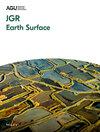The rapid melting of glaciers and thawing of permafrost in mountainous regions have heightened the danger of rock-ice avalanches. These avalanches pose a severe threat due to their potential to transform into water-saturated debris flows. The catastrophic event in Chamoli, India, on 7 February 2021, illustrates the devastating consequences of such processes. Developing a model capable of predicting the dynamics and extent of these events is imperative for natural hazard science and disaster mitigation. In response, we propose a depth-averaged rock-ice avalanche model encompassing four distinct materials: rock, ice, snow, and water. The model integrates crucial physical processes, including frictional heating, phase changes, ground material entrainment, and air-blast hazards. Through a system of mass and momentum balance equations extended with grain flow and internal energy equations, the model captures heat exchanges and resulting phase changes as the fragmented material flows. Focusing on identifying the primary water source in the flow and testing the model on the 2021 Chamoli event, we quantify water's influence on flow dynamics and regime transitions. However, uncertainties persist in heat transfer physics and quantifying the hydro-meteorological state of the flow path. Our thermo-mechanical model enables the simulation of complex avalanches and identifies key flow transitions: powder cloud formation and potential debris flow transformation. The study underscores the pivotal role of water in avalanche dynamics and the challenge of accurately quantifying water content within the flow, necessitating comprehensive ground assessments for effective disaster management.



